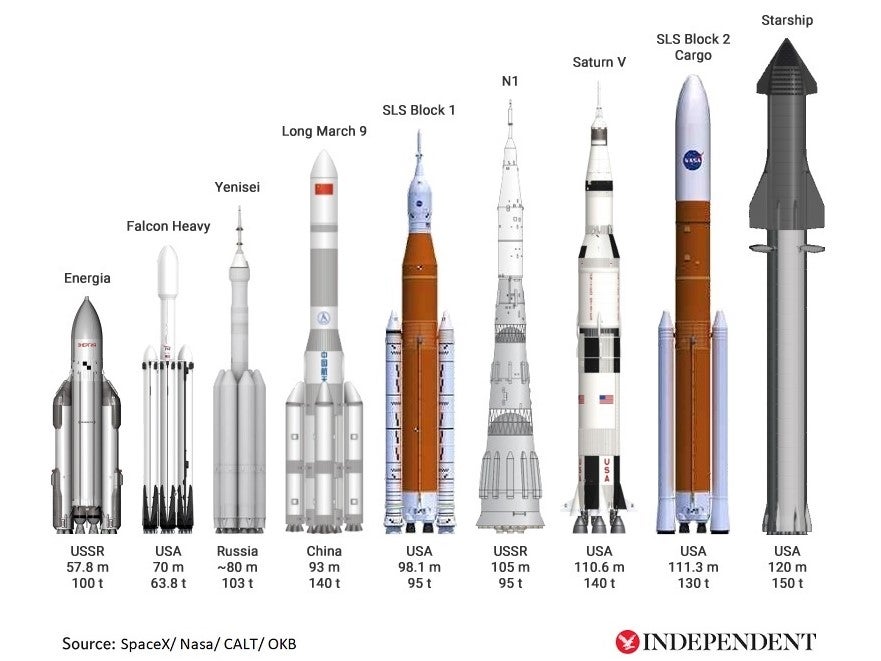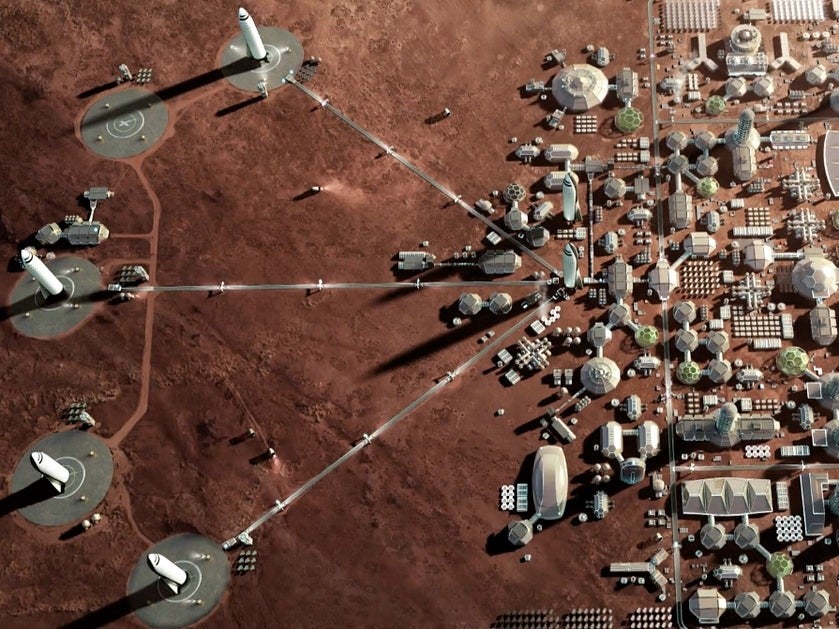Elon Musk’s Starship rocket made it to space – is the mission to Mars really on?
After making it into orbit, Elon Musk is already planning on reaching the red planet, writes Anthony Cuthbertson. Could a future Starship allow us to explore other star systems?


On 14 March, exactly 22 years after the company was founded, SpaceX achieved what is perhaps its most impressive feat yet. Measuring 120 metres tall – 24 metres taller than Big Ben’s tower – the firm’s Starship rocket lifted off from a launch pad on the southern tip of Texas. Less than nine minutes later, it had reached orbit for the first time.
Starship is the most powerful rocket ever built, and the world’s first fully reusable spacecraft designed to take both crew and cargo to the moon and beyond. When it attained orbital velocity, following two failed attempts in 2021 and 2023, it also became the heaviest single object ever sent into space.
This alone may not seem as remarkable as some of SpaceX’s other accomplishments. In just over two decades, the company has pioneered rockets capable of landing and relaunching, delivered astronauts to the International Space Station, and built a vast satellite network capable of beaming high-speed internet all over the globe. But this was the first solid indication that Starship could realise the extraordinary purpose for which it was built: to colonise another planet.
SpaceX described the test as “phenomenal”, while those financing the endeavour appeared optimistic about Starship’s future, despite both parts of the rocket being ultimately lost. Chad Anderson, a managing partner at SpaceX investor Space Capital, told The Independent following the launch that he believed it was a “hugely successful” mission and an “incredible breakthrough” for the company.
“The engineering challenges are immense for a vehicle of this size and complexity,” he said. “Starship is a revolutionary launch vehicle that promises to shake up all the givens of space: that it’s expensive, difficult, and dangerous to get there.”

The 33 Raptor engines on its “Super Heavy” booster give Starship a thrust of 7.5 million kilograms of thrust – roughly double that of the world’s second most powerful rocket, Nasa’s Space Launch System (SLS). This enormous power, according ro SpaceX, will allow it to launch a payload of more than 150 tonnes. Its internal volume will also provide enough space to carry up to 100 passengers – more people than can fit on a double-decker bus.
Gwynne Shotwell, who serves as SpaceX’s chief operating officer and deputy to Elon Musk, revealed on Tuesday that the next Starship prototype will be ready to fly in around six weeks – a remarkable relaunch rate considering not a single usable piece remains from last Thursday’s flight.
Shotwell told the Satellite 2024 conference that the aim was to recover both stages of the rocket, while also deploying satellites from the letterbox-shaped payload door on the upper stage. Industry insiders were originally expecting to see satellites onboard the next flight, but the company’s main objective for May’s flight is to “get re-entry right”.

These immediate goals are dwarfed by what could come next. SpaceX has already secured a multi-billion dollar contract with Nasa to provide Starships for the US space agency’s flagship Artemis program. The giant rocket forms an integral part of the mission to return humans to the surface of the moon for the first time in more than 50 years. However, Nasa has already questioned SpaceX’s pace of development.
Starship was originally slated to launch in December 2025 on the Artemis 3 mission, landing astronauts on the moon’s south pole. In January, following meetings between SpaceX and Nasa, the mission was pushed back to September 2026.
Musk has always stated that SpaceX’s ultimate purpose is to establish a permanent human colony on Mars before 2050. This will require fleets of Starships shooting between Earth, the moon and the Red Planet, with a terrestrial network of launch sites built on disused oil rigs also allowing hypersonic travel between different points of our planet.

The rocket’s massive power inspires equally massive ambition. On Monday, Musk posted to X that “a future Starship, much larger and more advanced, will travel to other star systems”.
Interstellar travel goes beyond SpaceX’s foundational mission of making it to Mars, which stems from Musk’s hope of transforming humanity into a multi-planetary species. He has previously spoken about turning Mars into an Earth-like planet by detonating thermonuclear weapons over its poles. SpaceX even features a “Nuke Mars” T-shirt in its official merchandise.
Speaking at a Mars Society event in 2020, Musk spoke of his fears that humanity could be wiped out if our planet is faced with a species-ending threat, such as an asteroid hitting Earth, a supervolcano erupting, or a global war.
“This is really about minimising existential risk for civilisation as a whole, and then having an exciting future that you can look forward to,” he said. “A future where we are a space-faring civilisation and a multi-planetary species is far more exciting than one where we are not.”

For this to happen in Musk’s lifetime – the billionaire has often joked that he wants to die on Mars, “just not on impact” – then all hope rests with Starship.
Last Thursday’s test may have not been a complete success, but the huge progress from the previous flights followed SpaceX’s proven model of successfully failing. Starship has finally made it to space. Now just another 100 million or so miles to Mars.




Join our commenting forum
Join thought-provoking conversations, follow other Independent readers and see their replies
4Comments